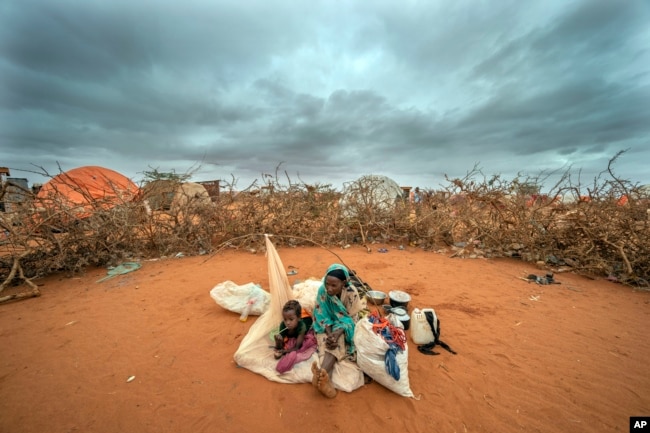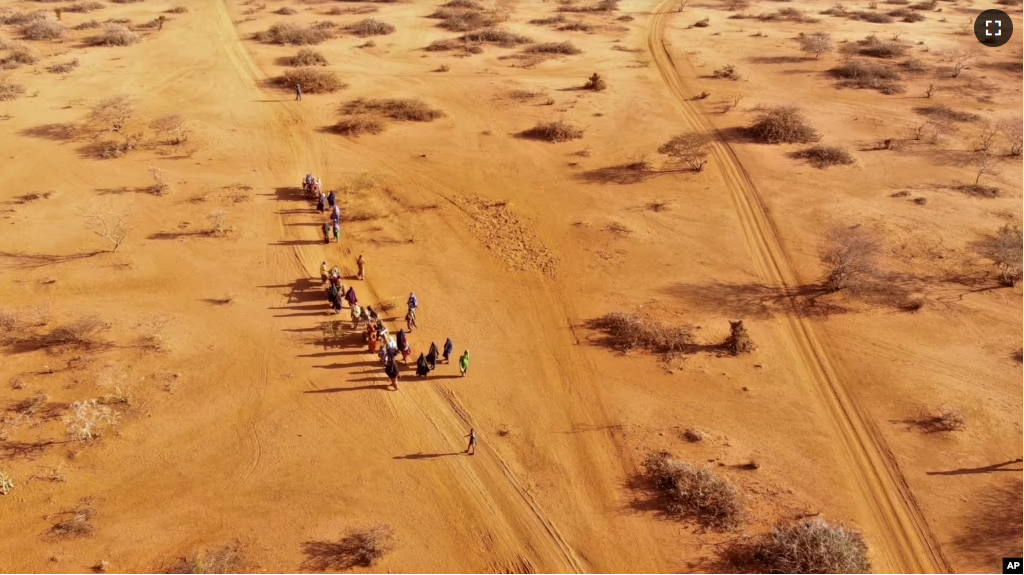A new report says an estimated 43,000 people died during Somalia’s longest drought on record last year. Half of them were likely children under five years old.
It is the first official count of deaths announced in the drought that is affecting large parts of the Horn of Africa.
At least 18,000 people, and as many as 34,000, are predicted to die in the first six months of this year.
“The current crisis is far from over,” says the report. It was released Monday by the World Health Organization and the United Nations children’s agency. And it was carried out by the London School of Hygiene and Tropical Medicine.
Somalia and neighboring Ethiopia and Kenya are facing a sixth consecutive season with little rain. Rising world food prices and the war in Ukraine add to the hunger crisis.
The U.N. and partners earlier this year said they were no longer predicting an official famine declaration in Somalia for now. But they called the situation “extremely critical” with more than 6 million people hungry in that country alone.

Famine is the extreme lack of food and a high death rate from lack of food or nutrients combined with diseases like cholera. A famine declaration means information shows more than a fifth of households suffer from extreme food shortage, more than 30 percent of children are severely malnourished, and over two people out of 10,000 are dying every day.
“The risk of famine still remains,” a U.N. representative in Somalia, Adam Abdelmoula, told reporters on Monday.
Some humanitarian and climate officials this year have warned that the changing situation is worse than the 2011 famine in Somalia. A quarter-million people died during that famine.
“The death rate was increasing as the year came to a close,” London School of Hygiene and Tropical Medicine professor Francesco Checchi told reporters. The hardest-hit populations are in Bay and Bakool in southwest Somalia and displaced people who went to the capital, Mogadishu.
Millions of farm animals that are kept, raised, and used by people have also died in the current crisis. And it is worsened by climate change and insecurity as Somalia battles thousands of fighters with al-Qaida’s East Africa counterpart, al-Shabab. The U.N. migrations agency says 3.8 million people are displaced, a record high.
A food security examination released last month said nearly a half-million children in Somalia are likely to be severely malnourished this year. This time, the world is looking elsewhere, many humanitarian officials say.
“Many of the traditional donors have washed their hands and focused on Ukraine,” Abdelmoula told the visiting U.S. ambassador to the U.N., Linda Thomas-Greenfield, during a meeting in Mogadishu in January.
I’m Gregory Stachel.
Cara Anna reported this story for The Associated Press. Gregory Stachel adapted it for VOA Learning English.
_____________________________________________________________________
Words in This Story
drought – n. a long period of time during which there is very little or no rain
consecutive – adj. following one after the other in a series
malnourished – adj. not eating enough food or not eating enough healthy food
wash one’s hand – idiom to refuse to take responsibility for something
focused – adj. giving attention and effort to a specific task or goal
